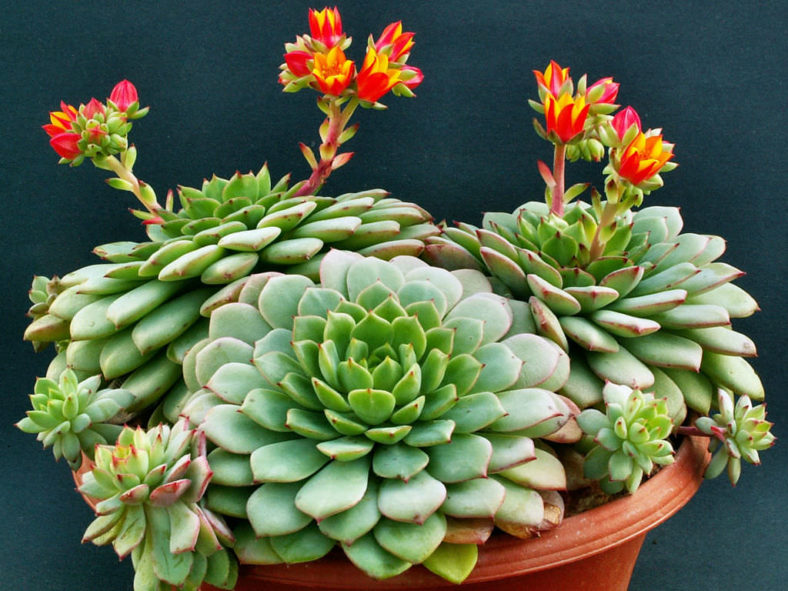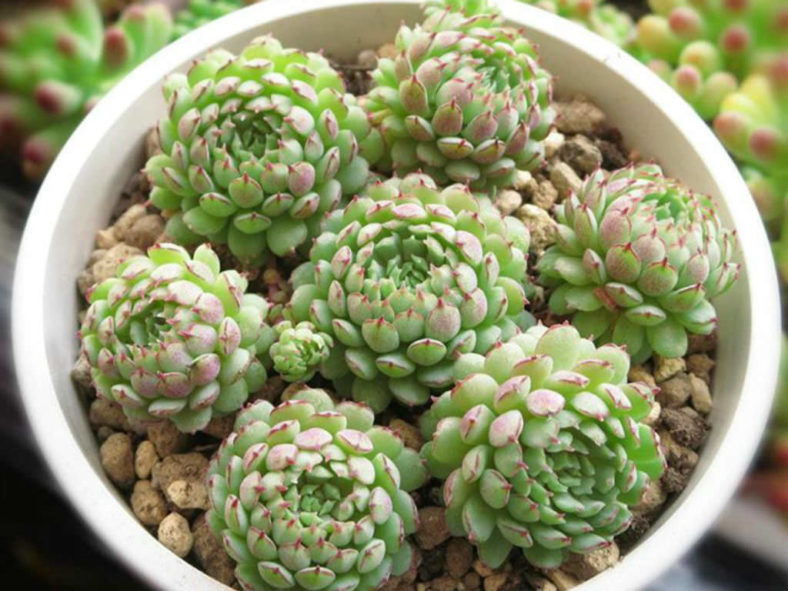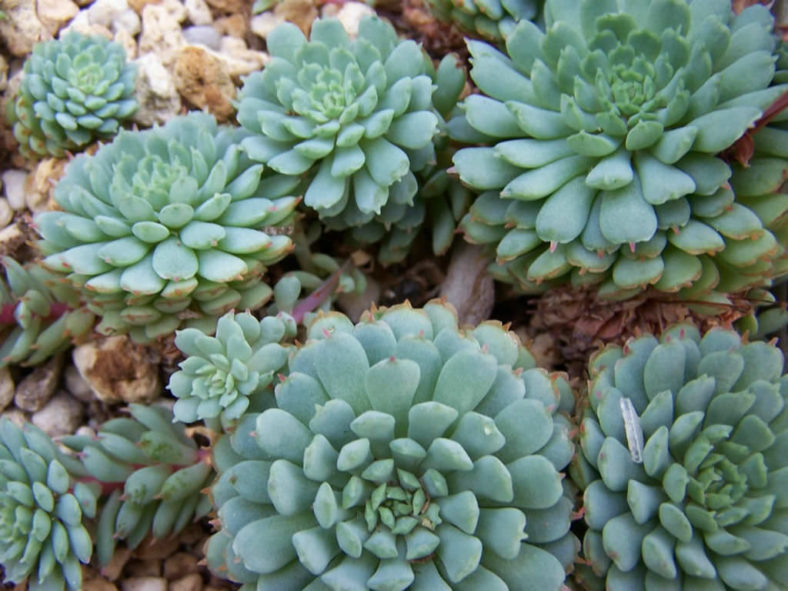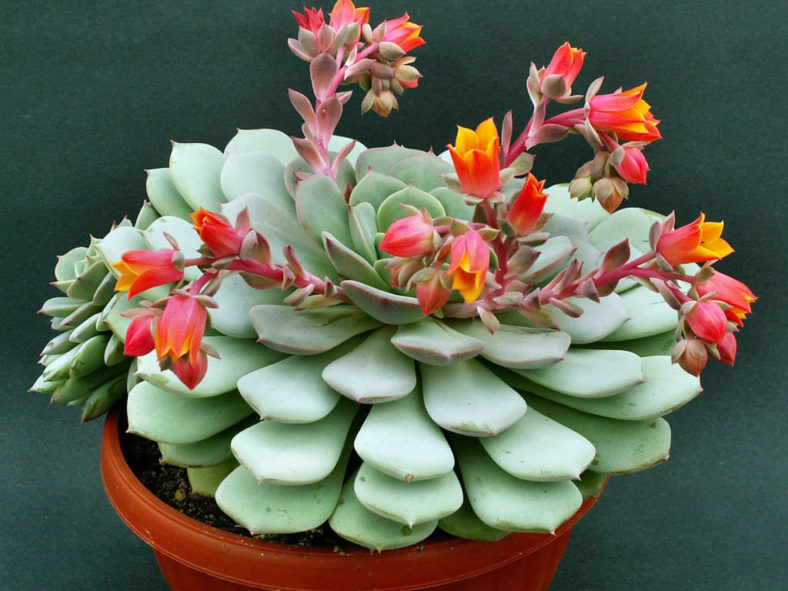Scientific Name
Echeveria globulosa Moran
Scientific Classification
Family: Crassulaceae
Subfamily: Sempervivoideae
Tribe: Sedeae
Genus: Echeveria
Etymology
The specific epithet "globulosa" (pronounced "glob-yoo-LOH-sa") means "having the shape of small balls" and refers to the small, often nearly spherical rosettes of this species.
Origin
Echeveria globulosa is native to Mexico (Oaxaca).
Description
Echeveria globulosa is a cute succulent plant that forms compact rosettes of thick, wedge-shaped leaves with pointed tips. It spreads quickly, creating a compact, low-growing clump over time. The rosettes can reach a diameter of 2 inches (5 cm). The leaves are a bluish-green, often with reddish margins and a keel.
Brightly colored orange-yellow flowers appear on short stems above the rosettes.

How to Grow and Care for Echeveria globulosa
Hardiness: USDA hardiness zones 9b to 11b: from 25°F (-3.9°C) to 50°F (10°C).
Echeverias make ideal potted plants but will also thrive in the ground. They need soil that drains quickly. This helps prevent moisture from rotting the roots. Many growers will create their own potting mix. However, commercial cactus and succulent potting soil will work fine.
These succulents like full sun. However, try to avoid these two things: drastic changes in sunlight and full sun in the afternoon. Dramatic changes in lighting can stress plants out. If you are moving your Echeverias outside in the spring, do it gradually. The intense afternoon sun can cause sunburn. When your succulents are inside, put them near the brightest window in your house during the winter. They will stretch if they do not have enough sunlight.
Echeverias are tender succulents. Many will tolerate several degrees below freezing, but it is not recommended to grow them in the ground if they are subjected to harsh conditions. You can keep them healthy during the cold months by moving them indoors. Then, once the threat of frost has passed, move them back outside in the spring.
Learn more at How to Grow and Care for Echeveria.
Links
- Back to genus Echeveria
- Succupedia: Browse succulents by Scientific Name, Common Name, Genus, Family, USDA Hardiness Zone, Origin, or cacti by Genus
Photo Gallery


